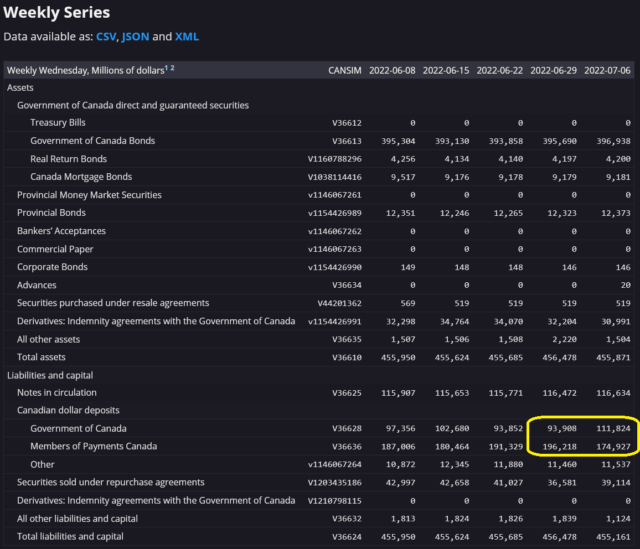A simple snapshot from the Bank of Canada:
I am specifically looking at June 29 vs. July 6.
Assets held in the Bank of Canada by member banks dropped from $196 billion to $175 billion (-$21 billion).
Correspondingly, assets held by the Government of Canada at the Bank of Canada rose from $94 billion to $112 billion (+$18 billion).
What happens between June 29 to July 6?
It is the milestone for calendar year-end corporate tax returns to be filed (with the remaining balance of taxes unpaid due… with interest), and also a quarterly date for CCPCs to remit their installments.
Personal income tax installments are on the 15th of each quarter, although the drop from April 27 to May 4th (when the remaining amount outstanding is due by April 30th) was $20 billion off of the bank assets.
Back on a Late Night Finance episode, I explained how the government is going to reel back liquidity through finding some ways of taxing it out of the system. I speculated that it would be done through increasing the GST, but at the rate things are going, they just need to keep the existing taxes to achieve this.
Bank reserves in the Bank of Canada are at their lowest levels since the week of April 15, 2020. Quantitative easing started on the week of March 11, 2020.
The next upcoming maturities out of the Bank of Canada government bond portfolio is August 1 with $16.8 billion, and September 1 with $6.8 billion. The monetary noose continues to tighten, albeit very slowly in relation to the $397 billion in bonds outstanding. Over the next 12 months, a total of $92 billion is scheduled to mature, along with a billion in mortgage bonds.
